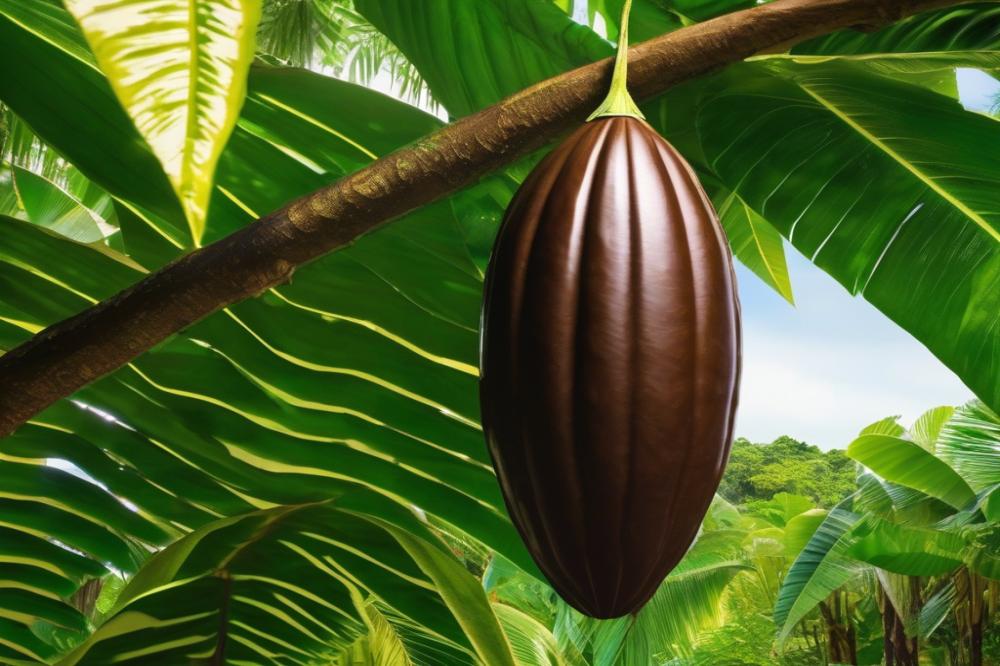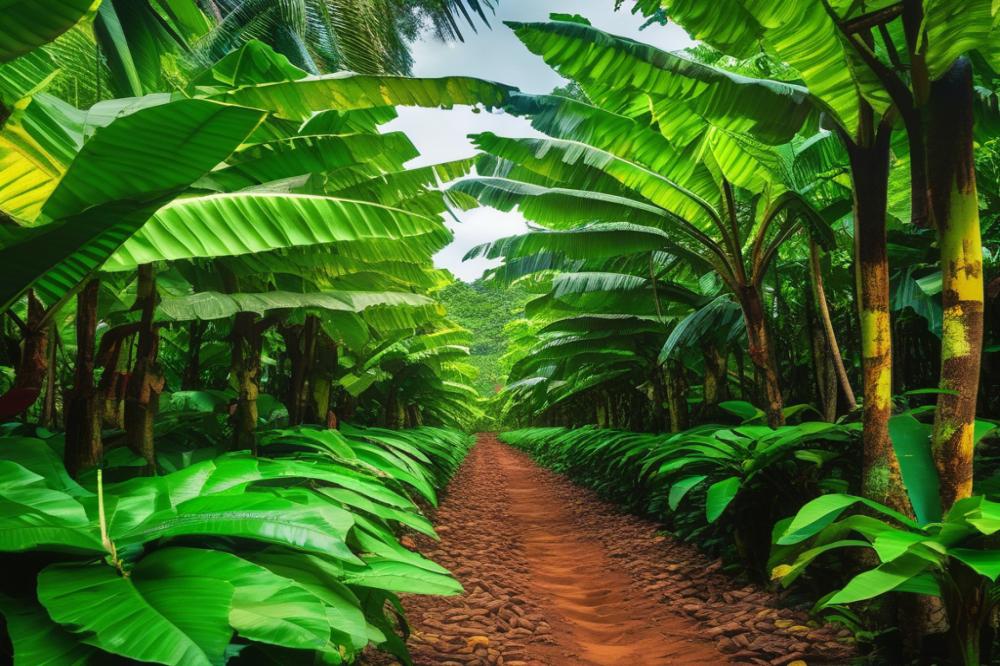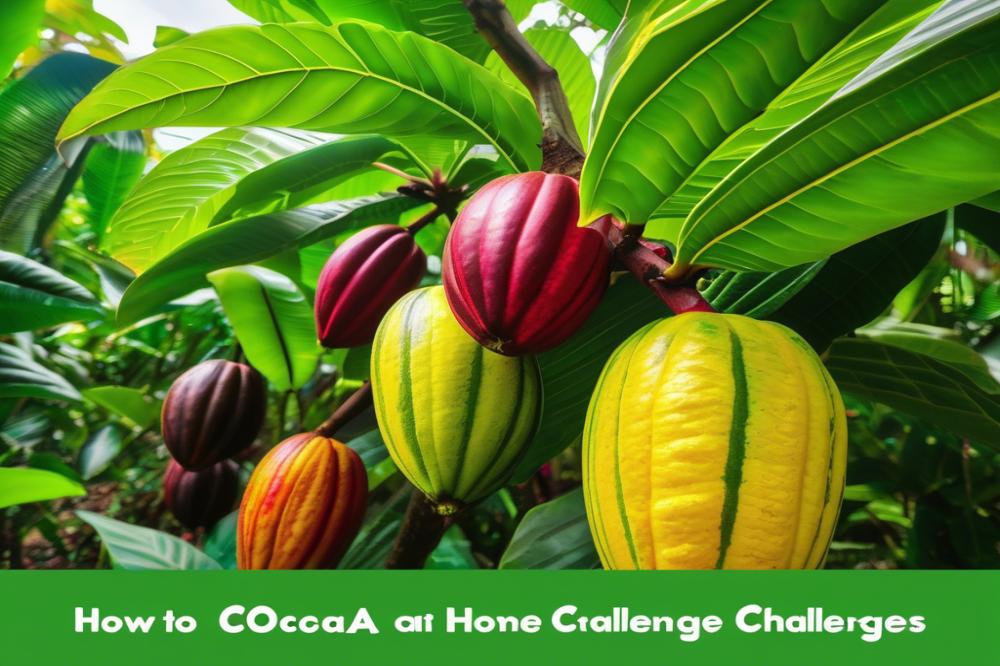The Cocoa Pod: Structure and Importance in Chocolate Production
The Cocoa plant holds a special place in the world of agriculture. Known for its vital role in creating chocolate, it also serves as a crucial cash crop for many farmers. Cacao is not just a product but a part of the culture in regions where it is cultivated. The cocoa tree, scientifically known as Theobroma cacao, thrives in tropical climates, making it a staple in countries near the equator.
The fruit of this remarkable tree is the Cocoa Pod. Each pod contains precious cocoa beans, which are the very foundation of chocolate. These fruits grow directly from the trunk and branches of the cocoa tree, showcasing a fascinating aspect of nature. When harvesting begins, farmers collect the pods, ensuring timely processing. Timely collection is vital. It prevents spoiling and prepares for the fermentation process.
Understanding the structure of the cocoa pod is crucial to appreciating its role in Chocolate Production. Inside the pod, one finds sweet, white pulp that encases the beans. This pulp is also an essential part of fermentation, a process that enhances the flavor profile of the beans. Without this phase, the rich taste that consumers love would not exist. Sustainability is another important factor. As global trade in chocolate continues to grow, knowing how to cultivate cacao sustainably is more essential than ever.
The cocoa pod represents more than just a fruit. Its journey from tree to chocolate processing involves care and expertise. Each step in this journey will impact the final product. Recognizing the cocoa pod’s importance helps everyone appreciate the complexities behind chocolate making better. Additionally, it highlights the interconnectedness of agriculture, trade, and culture.
Cocoa Pod Structure
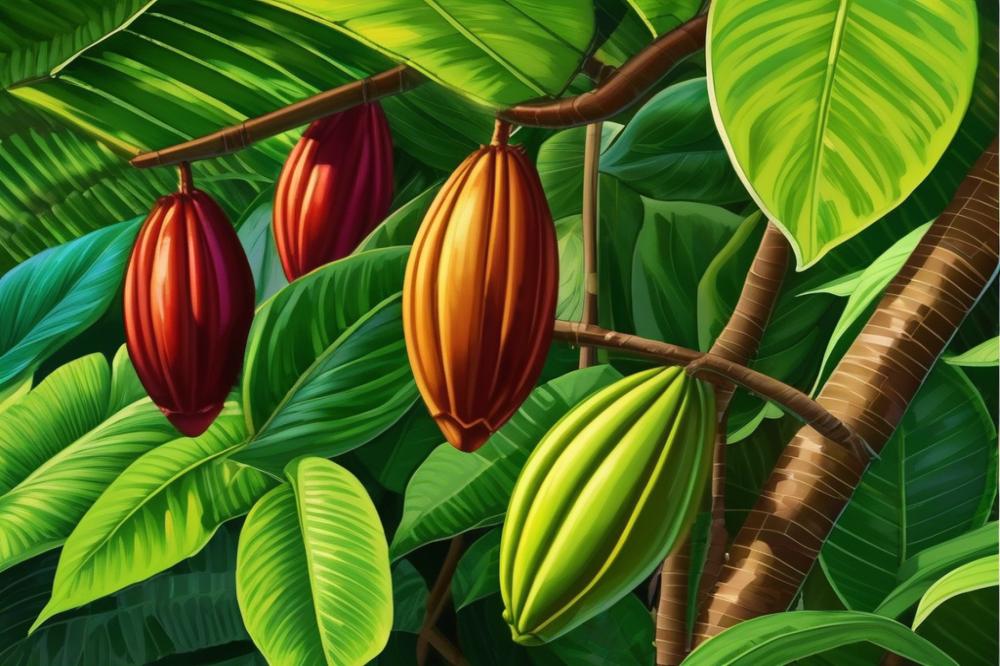
The cocoa pod boasts a distinct appearance that is hard to ignore. Shaped somewhat like an elongated football, it has a hard, ridged outer rind. This rind can vary in color, ranging from vibrant yellow and deep orange to rich purples and greens, depending on the cacao variety.
Inside the pod lies an essential part of the chocolate production process. The anatomy can be broken down into three main components: the outer rind, the sweet pulp, and the seeds. The pulp surrounds the seeds, providing moisture and a sugary substance that attracts animals. This sweetness serves a dual purpose, aiding in the fermentation process that is crucial for developing the flavor profile of chocolate.
Cocoa beans, hidden safely within the pulp, undergo fermentation before they are ready for harvesting. The fermentation phase is vital, as it enhances the inherent flavors and aromas, transforming the beans into the cocoa that is utilized in chocolate processing. Without the pod, these beans would not be safeguarded during their growth. Nature designed it to house and protect seeds, ensuring they are well-shielded from external threats.
A cocoa tree can produce many pods throughout its life, each containing numerous seeds. These pods are harvested at the right time to maintain quality. As farmers engage in this practice, sustainability plays a significant role in agriculture. The careful management of cocoa pod production helps secure its place in global trade, influencing economies and livelihoods around the world.
In summary, the cocoa pod is not just a vessel; it serves a pivotal role in safeguarding the future of cacao. From the outer rind to the nurturing pulp, every aspect contributes to the journey of cocoa beans from tree to chocolate. This journey, rich in flavor and significance, reflects the importance of each cocoa pod in the broader context of chocolate production.
Harvesting and Agriculture
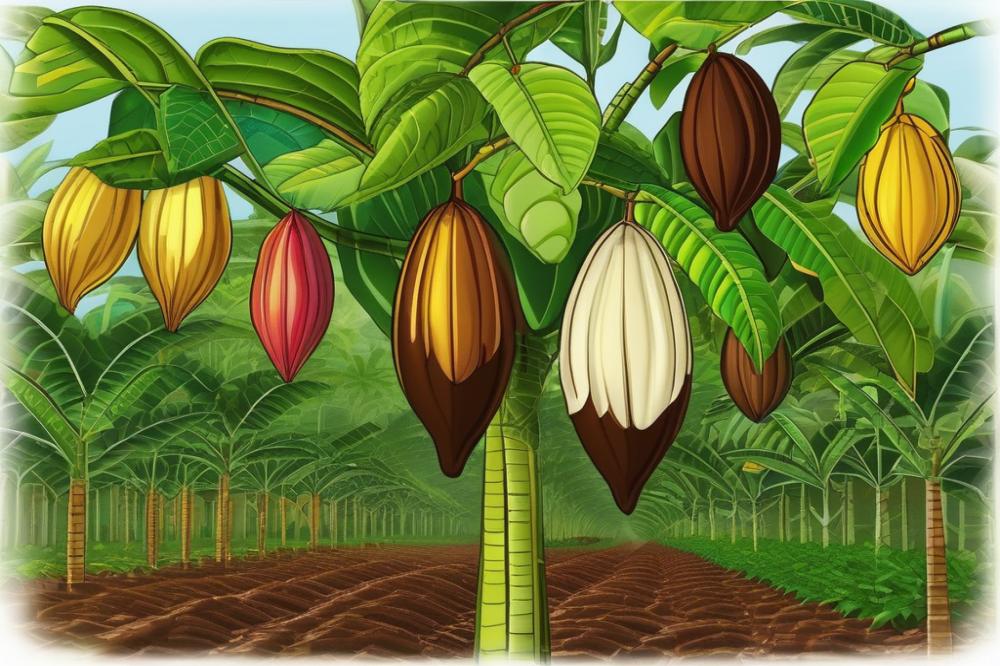
Overview of Cocoa Tree Cultivation and Agricultural Practices
Cocoa trees thrive in humid tropical climates. Farmers usually plant cacao in shaded areas to protect it from harsh sunlight. Crop rotation plays a vital role in maintaining soil health. Integrated pest management is widely used to reduce chemicals in farming. Many growers work alongside local communities to promote effective farming techniques. This partnership often helps improve both yields and livelihoods.
Timing and Techniques of Harvesting Cocoa Pods
Timing is crucial for harvesting. Cocoa pods must be picked at peak ripeness for the best quality. Farmers typically check for color changes, signaling that the pods are ready. A sharp machete is often the tool of choice for cutting the pods from the tree. Each cacao pod is then carefully collected to avoid damaging the surrounding tree. This process will ultimately impact the quality of cocoa beans and their flavor profile.
Importance of Sustainable Practices in Cocoa Farming
Sustainable practices are essential for the future of cocoa farming. They help protect ecosystems and maintain biodiversity. Organic farming techniques, like composting and natural pest control, can add value to cocoa production. Sustainable agriculture can also create better economic opportunities for farmers. Global trade demands more transparency in sourcing, pushing growers to adopt these practices.
Impact of Agriculture on Cocoa Quality and Flavor Profile
Agricultural methods have a significant effect on the quality of cocoa beans. Soil conditions, climate, and farming techniques all contribute to the final flavor. For instance, beans grown in richer, healthier soil may produce a more robust chocolate flavor. Additionally, the fermentation process after harvesting enhances the chocolate’s characteristics. Farmers who apply good agricultural practices generally yield higher-quality products, attracting buyers in competitive markets.
Fermentation Process

After harvesting, the real magic begins with the fermentation of cocoa beans. Cocoa beans are extracted from the pods and packed together, typically in shallow boxes or containers. During this time, natural microorganisms start to work on the beans. Yeast and bacteria thrive in the sugary pulp surrounding the beans. This fermentation process usually takes about five to seven days.
As beans ferment, they undergo a remarkable transformation. Cell walls break down, and the flavor begins to shift. The heat generated during fermentation activates enzymes that change the chemical structure of the beans. Essential flavors start to develop, laying the groundwork for what chocolate will eventually taste like. Without proper fermentation, the beans may taste sour or bitter.
The quality of the final product heavily depends on this phase. A well-executed fermentation can lead to superior chocolate processing. If the fermentation is inconsistent, the flavor profile may suffer. Many chocolate makers seek beans that have been fermented in a specific way to construct their desired taste. This process is crucial not just for flavor, but also for the beans’ aroma.
This stage is significant, especially for small-scale farmers. Adequate fermentation enhances the value of their crops in global trade. Buyers often look for high-quality, well-fermented beans. Agriculture practices that respect sustainability ensure the future of cacao farming. Farmers who adopt these practices often see improvements in both yield and flavor.
Sustainability and quality go hand in hand in the world of chocolate. Regions known for their careful fermentation often become preferred suppliers. A consistent flavor profile creates trust within the chocolate industry, further emphasizing the importance of this step. Understanding fermentation helps both chocolate makers and consumers appreciate the complexity behind every bar.
Chocolate Processing
Transforming cocoa beans into chocolate involves several key steps. Initially, farmers begin the process by harvesting cacao from the cocoa tree. Each cocoa pod contains numerous cocoa beans nestled inside sweet white pulp. After cutting the pods from the trees, workers extract these beans, initiating the journey towards chocolate.
Fermentation plays a crucial role in processing cocoa beans. After extraction, beans are placed in shallow containers and covered for several days. This stage allows the beans to develop their flavors. Engaging in this process significantly affects the final taste, contributing to the rich and complex flavor profile we associate with chocolate.
Post-fermentation, beans are dried under the sun, reducing moisture and preparing them for the next steps. Once dried, they are roasted to enhance flavor and bring out the best characteristics of the beans. The roasting temperature and time can vary, influencing the final product’s taste. This highlights how various choices during processing can impact the end result.
One of the significant aspects of working with cocoa is sustainability. Many producers are now adopting eco-friendly methods of agriculture to grow cacao. This shift not only helps the environment but also improves the quality of the beans. Sustainable practices can lead to better growth conditions, which in turn, creates more flavorful cocoa beans.
Methods of Chocolate Production
Different methods exist for producing chocolate, each varying in complexity and technique. The simplest involves grinding roasted beans into a paste called chocolate liquor. This liquor can then be separated into cocoa solids and cocoa butter. Combining these in different proportions leads to various types of chocolate such as dark, milk, or white.
In addition to traditional methods, some manufacturers experiment with modern techniques. These can include conching, a process where chocolate is continuously mixed to improve texture and flavor. The equipment used and the specific approaches taken can also impact the final chocolate produced.
The significance of the cocoa pod remains evident throughout all stages of processing. Without the pods’ rich contents, we would lack the essential ingredients for chocolate. Their role is foundational in global trade, linking farmers to manufacturers and ultimately, to consumers.
Overall, understanding each step from harvesting to the final product reveals the intricate relationship between cocoa pods and chocolate processing. Each decision made impacts flavor, sustainability, and trade. Hence, the importance of the cocoa tree in this journey cannot be understated.
Global Trade and Economic Importance
The global trade of cocoa products plays a significant role in the world economy. Cocoa beans are in high demand for chocolate processing. Countries around the equator produce most of the world’s cacao. West African nations, such as Côte d’Ivoire and Ghana, are major players in this market. They account for nearly 60% of the total production.
Harvesting cocoa pods involves careful techniques. Farmers collect the pods by hand, as machines can’t do the job effectively. After harvesting, fermentation begins. This process is crucial as it develops the rich flavor profile we associate with chocolate. Post-fermentation, beans are dried and prepared for shipping worldwide.
Economic impact on producing countries varies. Cocoa trade offers jobs to millions of people. In regions where agriculture struggles, cocoa can be a lifeline for families. Yet, income from cocoa is often uncertain. Fluctuating prices in the global market can lead to financial instability for farmers.
Challenges abound in the cocoa industry. Sustainability is a pressing issue. Many cocoa farms are in danger due to deforestation and climate change. These factors threaten not just the trees but the livelihoods of farmers, too. Fair trade practices aim to support producers, but making the shift can be complex.
Labor issues also create obstacles. Child labor remains a concern in some areas. International efforts to combat this are ongoing, yet change is slow. Advocating for fair wages is essential for improving living conditions. The call for ethical sourcing impacts supply chains significantly.
Cocoa’s journey from the farm to the consumer is intricate. Each step influences the final product, including environmental practices. As awareness grows about cocoa’s significance, consumers seek transparency. This demand for sustainability can reshape the future of the industry.
Final Thoughts on Cocoa’s Role in Chocolate Production
The cocoa pod plays a crucial role in chocolate production. This single vessel contains the cocoa beans needed for almost all chocolate products. It is the building block for the sweet treats many enjoy. The journey from cocoa pod to chocolate bar involves careful steps and intricate processes. Fermentation, drying, and roasting transform the raw ingredients into delicious flavors. Without these stages, chocolate as we know it would not exist.
Sustainable practices in cocoa agriculture are essential for the environment and communities. Farmers face various challenges, including climate change and unfair trade practices. By focusing on eco-friendly farming methods, we can help protect the earth while supporting cocoa farmers. These efforts can promote biodiversity in the regions where cocoa trees grow. When communities thrive, they can provide better quality cocoa for the marketplace.
Looking ahead, the future of cocoa cultivation seems bright yet filled with challenges. Increased demand for chocolate means that the industry must adapt. Technological advancements could lead to better crop yields and disease-resistant varieties. Additionally, fair trade initiatives may raise awareness and help farmers earn a living wage. If these trends continue, cocoa can maintain its important position in global trade, benefiting producers and consumers alike.
By understanding the significance of each cocoa pod, we can appreciate chocolate’s complexity and richness. Sustainability and ethical practices will play a key role in this industry’s future. As consumers, we have the power to make informed choices that support both delicious flavors and responsible agriculture.

